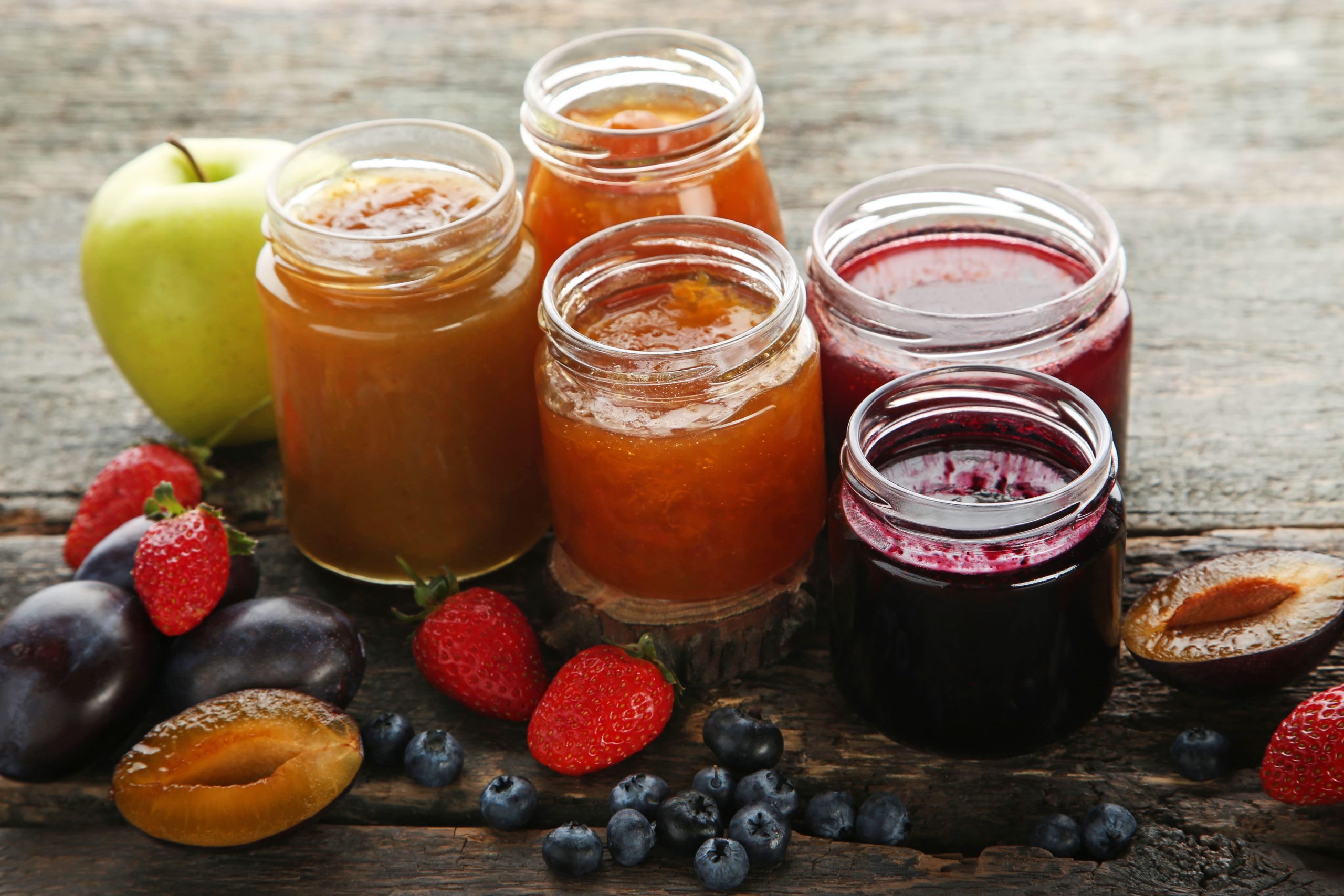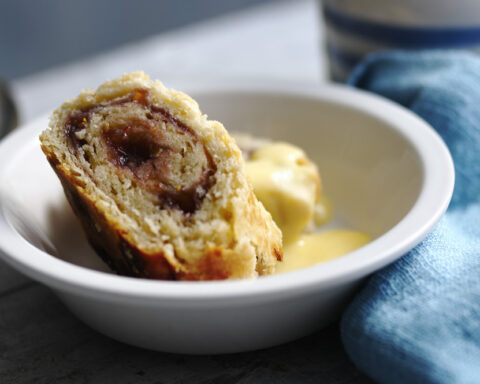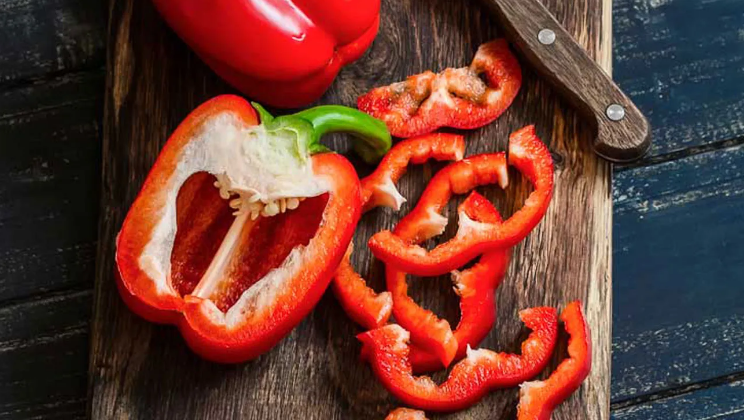The making of jam and jelly started years ago in the Middle Eastern countries, where sugar cane grew naturally before the returning Crusaders introduced them in Europe. Currently, they have spread across the globe. Jam is a mixture of sugar, fruit, and sometimes pectin, used as a thickener. In contrast, jelly is made by cooking fruit juice, sugar, and pectin.
Both are forms of fruit extracts widely used as an accompaniment for food. They differ in the ingredients, preparation methods, and physical form. Jelly refers to various clear fruit spreads comprising firmed fruit (or vegetable) juice made from pectin. On the other hand, jam is manufactured with whole food, cut into pieces, or ground.
They are both popular fruit spreads and are households’ staples around the world. They are utilized interchangeably for many recipes, and many don’t understand what sets them apart. Therefore, this article will highlight the difference between jam and jelly.
Contents
The major distinction between the two is that jam is made with edible fruit, whereas jelly consists only of juice. Due to this, people who have an aversion to certain textures in their food dislike jam. Strawberry jam consists of infinite minuscule strawberry seeds that can get stuck in your teeth. For people who are mindful of their nutrition, jams contain many more helpful nutrients and are favorites for most folks. Since the whole fruit is contained within the paste, multiple minerals and vitamins are present. Additionally, the naturally-rich fiber content of most fruit is also sustained and consequently helps pass it through the digestive tract.
Jam may also use the natural fruit pectin found within its flesh. Pectin is the compound that assists in solidifying the preserves so that they are not a runny mess and can be spread. Because the solids are dismissed from jellies, they will need additional pectin to become gelatinous. Moreover, they differ in their composition.
Consistency
Consistency refers to the measure of the fluidity of a substance. Two raw materials are responsible for the consistency, namely sugar and pectin. Jelly is usually made with only the liquid components of fruit, while jam uses all edible parts. By utilizing the whole fruit instead of just the fruit juice, the latter is significantly thicker and chunkier than their smooth-bodied relative. The texture of jams is lumpy, uneven, and they do not spread faster than jellies.
Preparation
Both of them are easy to prepare. However, there is a distinction between them with regards to preparation. For jams, the fruit is cooked with sugar and water in jelly the fruit is juiced. The process of cooking water and sugar releases the natural pectin the flesh softens and breaks down. Jelly preparation often begins with extracting the fruit juice by using a jelly bag. Scientifically, jellies are considered more processed than jams. The recipes for preparation are as follows:
Jam Making Recipe
The Fruit – Any fruit used as an ingredient must always be clean, fresh, normal (not overripe or rotten), and completely dry. If the fruit is wet, the water may dilute the natural pectin and impede the preserve from attaining a good set. Boiling it will help in sterilizing and purifying it. Thus, it destroys any natural yeast and inhibits the fermentation process. Generally, partially underripe fruit contains noticeably higher levels of pectin than overripe ones.
Sugar- A typical granulated sugar is the best for making jam as it produces a clear and pure jam. Mostly, granulated sugar tends to dissolve evenly and slowly. Also, golden syrup, brown sugar, treacle, and honey sweeten the jam mixture, although it may change the flavor. There is a need to follow the exact ingredients detailed in the recipe.
Pectin-When using low pectin levels, it might be essential to add a sachet or two of powdered commercial pectin such as gelatin. The amounts needed will vary from one product to another. Always follow the instruction on the packet.
Jelly Making Recipe
Sugar – is a pivotal ingredient in jellied fruit products. You must include it in the proper proportion with acid and pectin to make a desirable gel. Sugar is a preservative for this product as it barricades the growth of microorganisms. Also, it improves the taste of the product. You should not reduce the quantity unless the syrup is the desired result. Granulated sugar is particularly used in homemade jellied fruit products and is often required to form a gel in regular recipes.
Acid – this is required for both flavor and gel formation. The acid amount differs among fruits and is higher in under-ripe fruits. When the fruits have reduced acid, you should add citric acid or lemon juice.
Pectin – this is the compound that causes the fruit to gel. Various kinds of fruits have sufficient natural pectin to make high-quality extracts. Some require added pectin, especially when used to make jellies that should be strong enough to hold their shape. The highest quality of pectin is found in just-ripe fruit. Notably, pectin from underripe and overripe fruits will not form a gel.
Fruit – the fruit offers the characteristic flavor and color to the jelled product. Also, it furnishes at least part of the pectin and acid required for a gel. The fruit should be just at the ripe stage for the best flavor and natural color. You can use Frozen or canned options to make jelly products.
Conclusion
The main differences between jellies and jams have been discussed above. However, the differences between various varieties of fruit, even within the same species, make for virtually limitless small differences—for instance, strawberries. There are different scores of strawberry varieties. Depending on the type chosen, consistency, the taste, and quality of strawberry jam or jelly will be noticeably different. Jelly and jam are the most common types of preserves. Many others, including fruit butter, fruit spread, marmalade, fruit curd, and conserves. Both jellies and jams contain high amounts of sugar. You should take them in small amounts to avoid raising sugar in the bloodstream.
- Bell Peppers 101: Nutrition Facts and Health Benefits - April 19, 2024
- Products That Assist with Stress Relief - September 21, 2023
- TRÈFLE – THE ROAD TO THE 15TH - July 29, 2023







